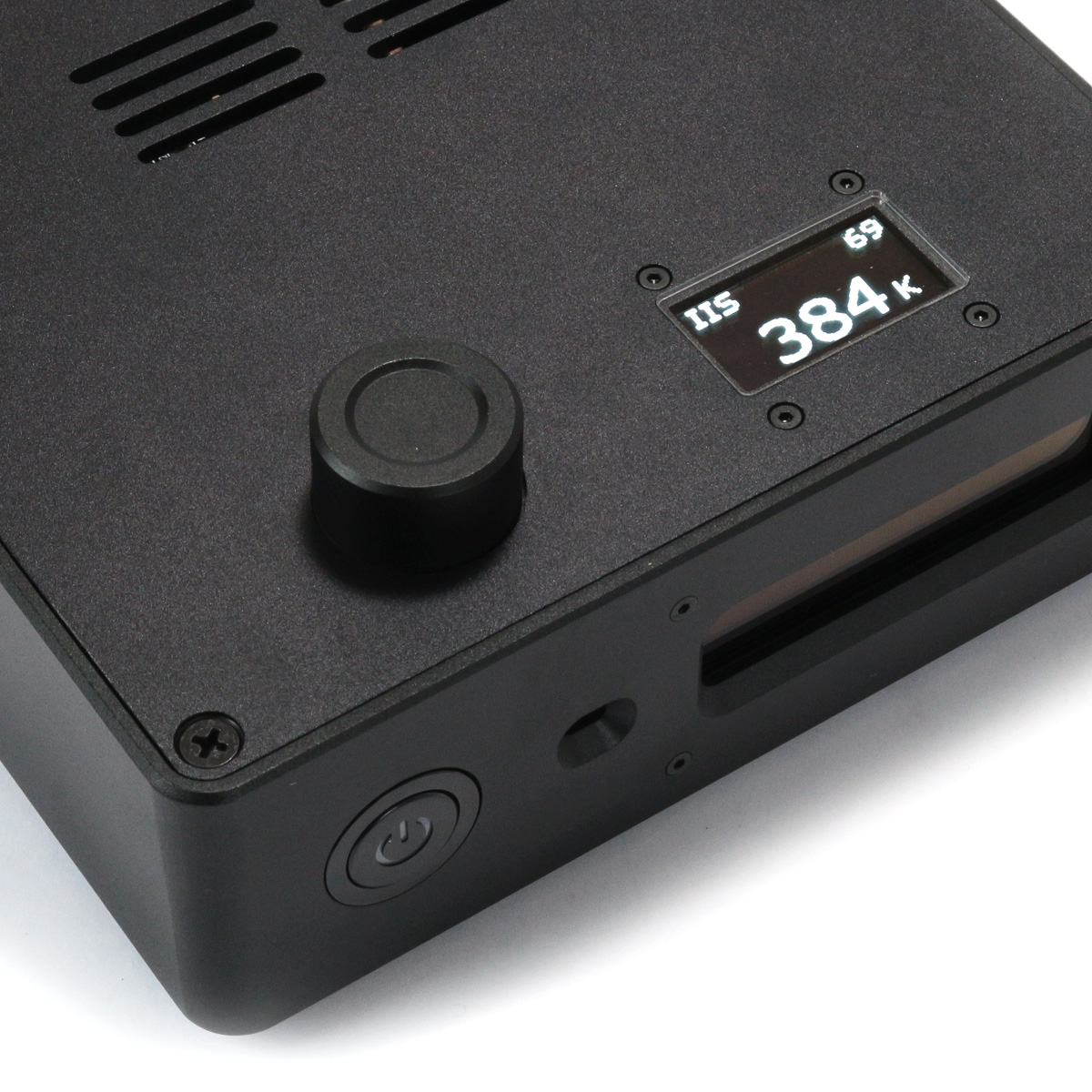Audiophonics RaspDAC ES9038Q2M V2
Streamer and DAC ES9038Q2M
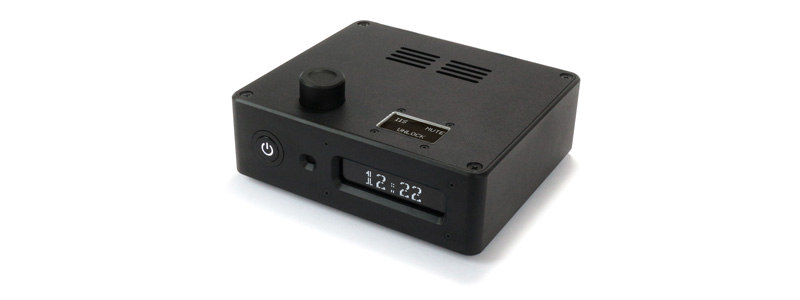
Concept
With the RaspDAC Audiophonics offers a simple and efficient ready-to-use hardware solution combining both network drive and DAC.
You can enjoy your favorite music by controlling playback directly from your smartphone or PC, while enjoying exceptional audio quality thanks to a powerful and transparent Digital / Analog conversion.
Moreover, with its RaspDAC, Audiophonics wishes to offer a totally Open Source solution. To do so, the device is based on an SBC (Single Board Computer) Raspberry Pi 3 B+, the reference in this field and the most powerful model proposed by the brand.
V2 version
In this V2 version of its RaspDAC ES9038Q2M, Audiophonics rethinks the ergonomics of the device by adding a button and a second screen. This will display the active input (SPDIF or Raspberry), volume and sample rate of the file being read. The button, directly linked to the DAC, will allow you to adjust the volume or change the source.
The RaspDAC is also equipped with an infrared receiver that can be combined with an IR remote control to control the unit directly from your sofa. You Find here a robust Audiophonics remote control in black Aluminium for remote control of your device.
Design
Key point of the RaspDAC, its design. Compact, sober and elegant, it will fit perfectly into your system. Its design allows it to be installed in a spacious living room or in a smaller space such as a desk. Particular care has been taken in the choice of materials. Audiophonics offers a robust 100% aluminum housing that will effectively protect RaspDAC components from interference while dissipating the heat produced by its linear power supply.
Of course, the ergonomics is not to be outdone since all the connectors and buttons are easily accessible and the screens visible and readable. The OLED screen on the front panel displays the time and playback information: Artist, titles, time, bitrate, IP... (Volumio and LMS Dietpi)
DAC
For this version of the RaspDAC, Audiophonics integrates the excellent ES9038Q2M converter supporting sampling rates up to 32bits 384kHz. It incorporates a high precision 100Mhz clock, low noise LDO control, ultra-low noise regulator (9µV) for the ESS chip reference voltage and an Altera processor.
This DAC uses 32bit HyperStream technology offering a wider dynamic range while drastically reducing jitter. Thanks to this design, the ES9038Q2M displays a dynamic range of 129dB and a THD+N of -120dB to offer you new musical horizons.
32Bit Attenuation technology allows volume control without loss of quality, eliminating the need for preamplifiers. This hardware volume control can be controlled from the Raspberry Pi 3 B+ using the dedicated driver available in our Volumio Image, or under Dietpi. The volume button on the cover directly controls the volume of the DAC, while pressing it selects the source: SPDIF or Raspberry Pi 3 B+.
Thanks to an integrated microprocessor, the DAC is able to automatically detect and adapt to the source's format and sampling rate. It automatically detects if the source is 16bit / 24bit or DSD DOP while remaining bitperfect. This CPLD chip control maintains high stability while preventing decoding problems and listening artifacts.
It is compatible with formats up to 24Bit / 384Khz and DSD 128 (Dop) on its 2 inputs. It includes two bipolar operational amplifiers NJM 2114 powered in 9V for the current / voltage I/V conversion section, which allows a high quality analog output. A last AOP NJM 2214 used in buffer finalizes the analog output stage and ensures an optimal restitution.
Connectic
The RaspDAC offers a complete connection system that will allow you to enjoy your audio system very simply. The Raspberry Pi 3 B+ has 4 USB-A 2.0 ports, a Micro SD port, an Ethernet port and a remote HDMI output. Coaxial SPDIF input. On the USB ports you can connect all kinds of compatible devices:
- Hard drive or USB Flash Disk
- Wifi USB Card
- External USB DAC
- Keyboard / Mouse ...
The DAC offers an analog output on stereo RCA as well as a coaxial SPDIF input. The power supply is provided by a 5.5/2.1mm DC subbase connected to an integrated linear power supply allowing good stability. The optimal input voltage is 7 to 9V DC and can be up to 12V maximum.
The power button not only switches off the power, but also switches off the system beforehand. It is also possible to turn it off from the Volumio interface. Wifi requires an external adapter (Dongle Wifi).
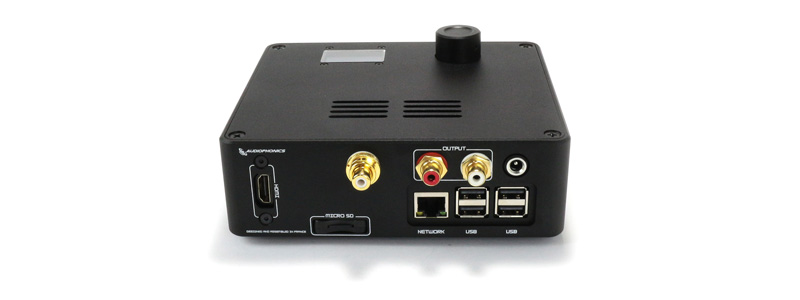
Display
If the small screen displays the sample rate, source, and volume level of the DAC, the front panel main display displays detailed playback information from Volumio or LMS.
If the device is not reading a file, it will alternately display the time and its IP address, particularly useful for simply accessing the control interface.
Once in playback, the screen changes to display again alternately, the music name and position (time) in the track, the sampling rate, bitrate and source, the artist name and album in playback, and of course the information PLay, Pause and Stop.
Finally, the display also allows you to view the volume level as it is adjusted via the Raspberry.
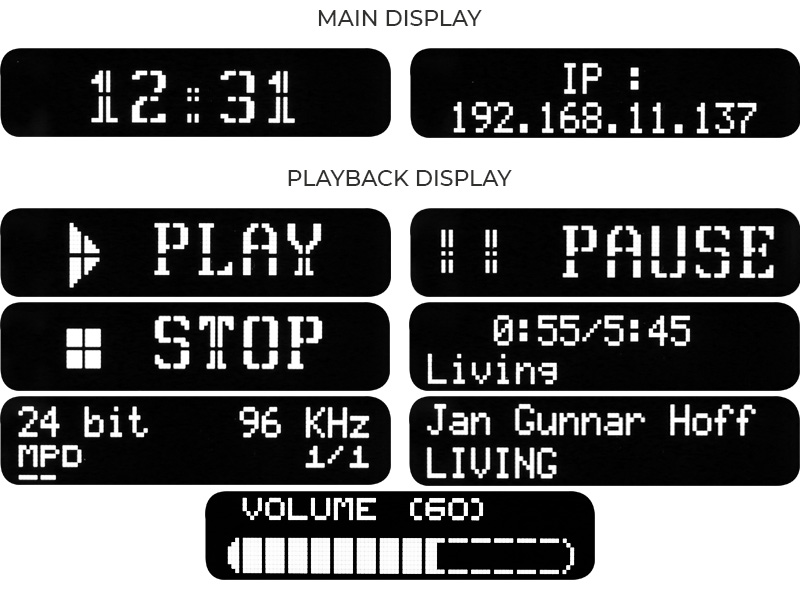
Software
Advertising itself as a free system, the RaspDAC is delivered without an operating system installed. You are free to choose and install the one that best suits your needs. Some features require the installation of custom scripts to work if you do not choose a pre-installed image :
The power management functions use a Python script to install. (or manual plugin available under Volumio)
The OLED screen works with a dedicated script that only works under Volumio and LMS (Dietpi).
IR reception requires the installation of LIRC, the power management of its dedicated script.
The hardware volume requires the use of the dedicated driver. (Native under Dietpi, manual plugin under Volumio)
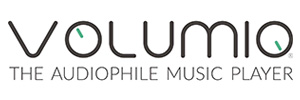
Currently we recommend to use Volumio which proposes at the same time very good audio performances but also a simple, intuitive interface and especially accessible since any connected device via a web interface.
Volumio allows to read from a NAS on the network, from a UPNP source, or from a local storage like a hard disk or USB key. It also allows access to Webradios, and has a Spotify plugin. It also manages the DLNA protocol allowing to control the player from an application like Bubble UPNP, which itself is able to read many streams, and has a Qobuz plugin. Airplay is also managed.
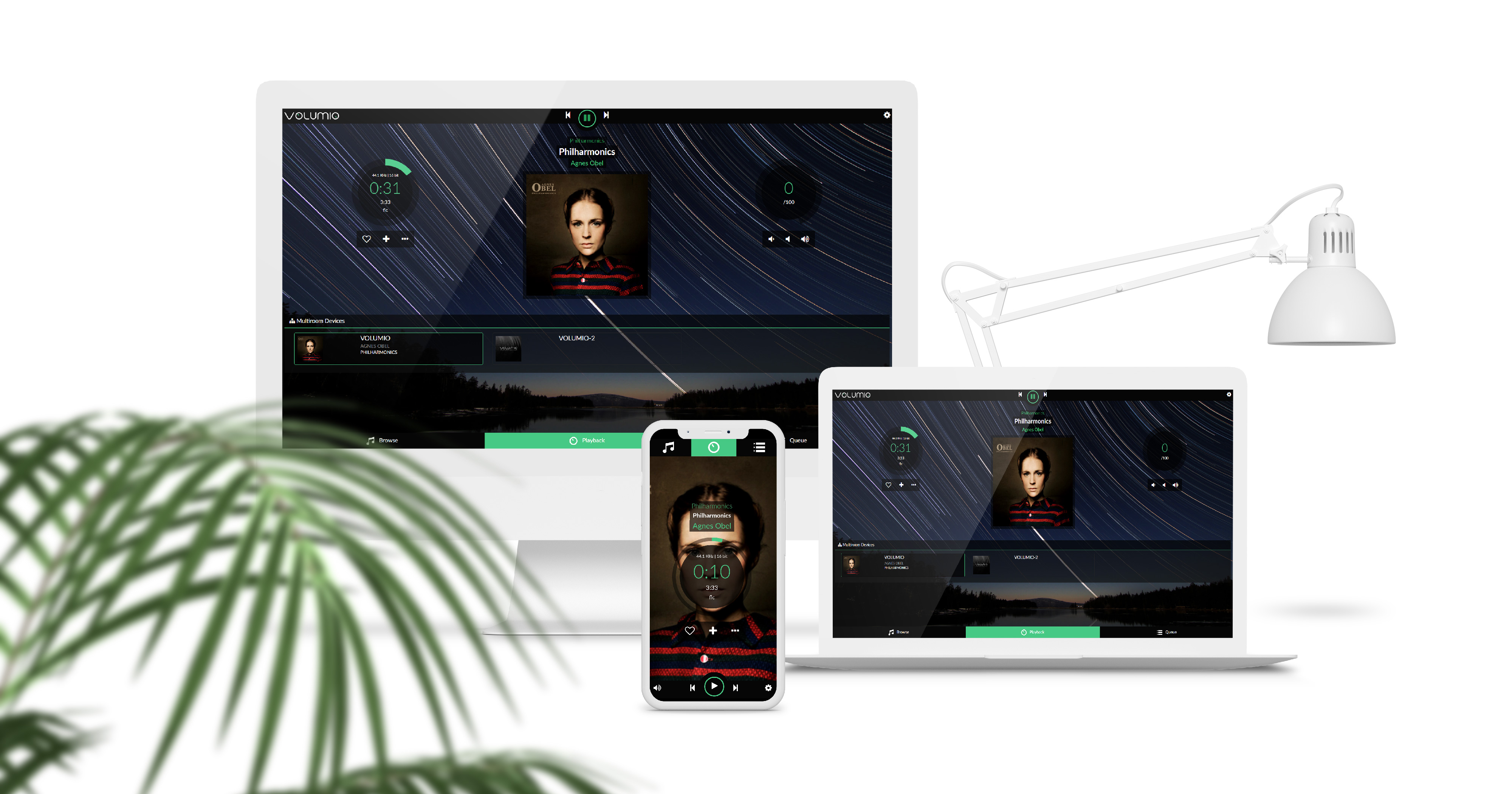
To make a product ready to use, and to be able to use the product from the reception, we propose an SD card including a pre-configured Image Volume with the plugins necessary for the functions present on the Raspdac. We strongly recommend it to beginners.
Indeed the installation and configuration of this type of solution requires good knowledge in Linux as well as in the hardware used.
Acheter carte SD VolumioYou can however opt for other solutions such as Max2PLay and its careful interface and compatibility or DietPi and its great modularity.
Click here to discover the characteristics of each distribution
Technical characteristics
| Connectors : Inputs |
|---|
| USB-A 2.0 | x4 |
| Coaxial | x1 |
| RJ45 | x1 |
| Micro SD | x1 |
| Connectors : Outputs |
|---|
| Stereo RCA | x1 |
| HDMI | x1 |
| ES9038Q2M + Raspberry Pi 3 B+ |
|---|
| Sampling rate | Up to 24bits 384kHz / DSD (Dop) 128 |
| Dynamic range | 129dB |
| THD+N | -120dB |
| Raspberry Pi 3 B+ |
|---|
| SoC | Broadcom BCM2837B0 |
| CPU | ARM Cortex-A53 1.4Ghz |
| GPU | VideoCore IV |
| General |
|---|
| Power supply | Jack DC 5.5/2.1mm / 7.5V 2.9A (included) |
| Dimensions | 159.6 x 156 x 69.3mm |
| Weight | 910g |
| Housing material | 100% Aluminium |
| Color | Black |


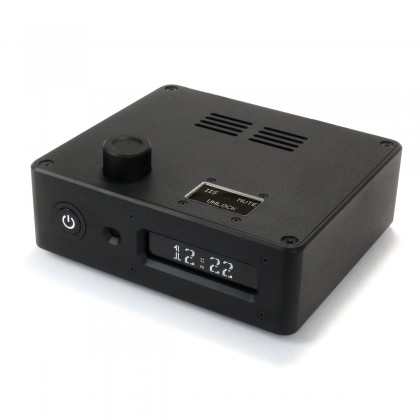










![[GRADE S] FIIO KA2 LIGHTNING Portable DAC Headphone Amplifier 2x CS43131 32bit 384kHz DSD256](https://www.audiophonics.fr/61299-thumb_default/fiio-ka2-lightning-portable-dac-headphone-amplifier-2x-cs43131-32bit-384khz-dsd256.jpg)
![[GRADE S] TOPPING DX7 PRO Balanced DAC Headphone Amplifier ES9038Pro Bluetooth 5.0 aptX HD LDAC 32bit 768kHz DSD1024 Black](https://www.audiophonics.fr/47119-thumb_default/-grade-s-topping-dx7-pro-balanced-dac-headphone-amplifier-es9038pro-bluetooth-50-aptx-hd-ldac-32bit-768khz-dsd1024-black.jpg)
![[GRADE S] GUSTARD C18 Master Clock OCXO 10MHz Silver](https://www.audiophonics.fr/67112-thumb_default/gustard-c18-master-clock-ocxo-10mhz-silver-stockb.jpg)
![[GRADE B] DAYTON AUDIO SD270A-88 Speaker Driver Subwoofer DVC 80W 4 Ohm 88dB 26Hz-2000Hz Ø25.4cm](https://www.audiophonics.fr/67029-thumb_default/dayton-audio-sd215a-88.jpg)


















